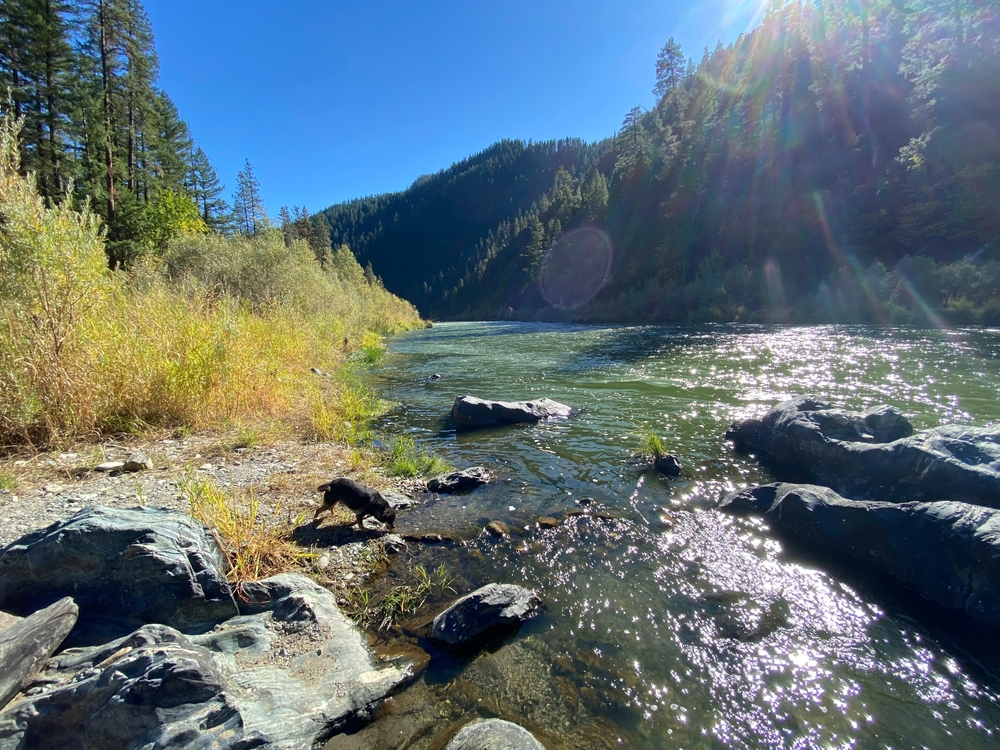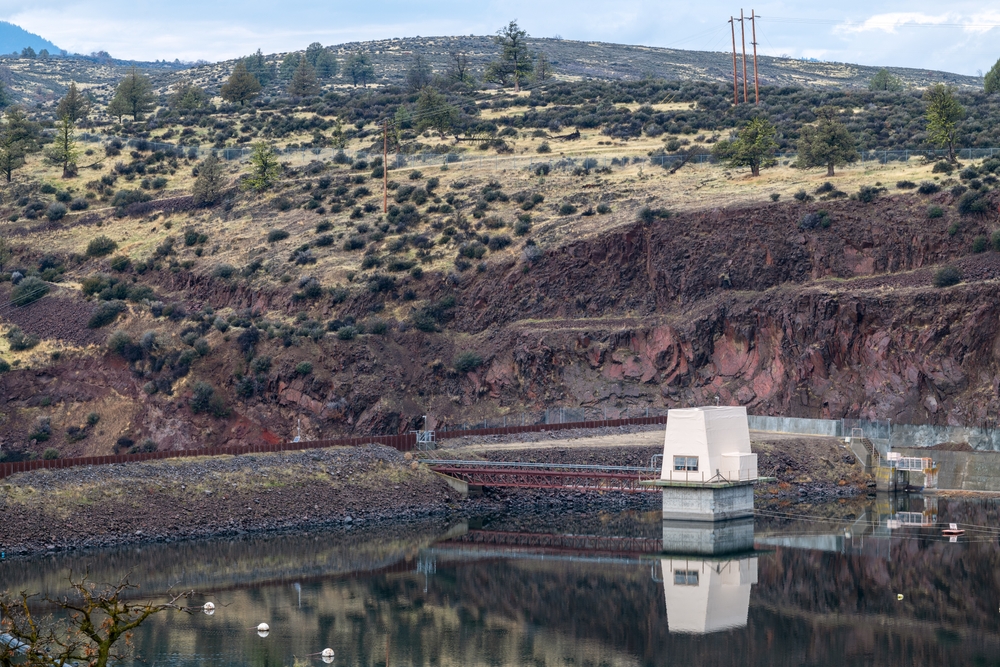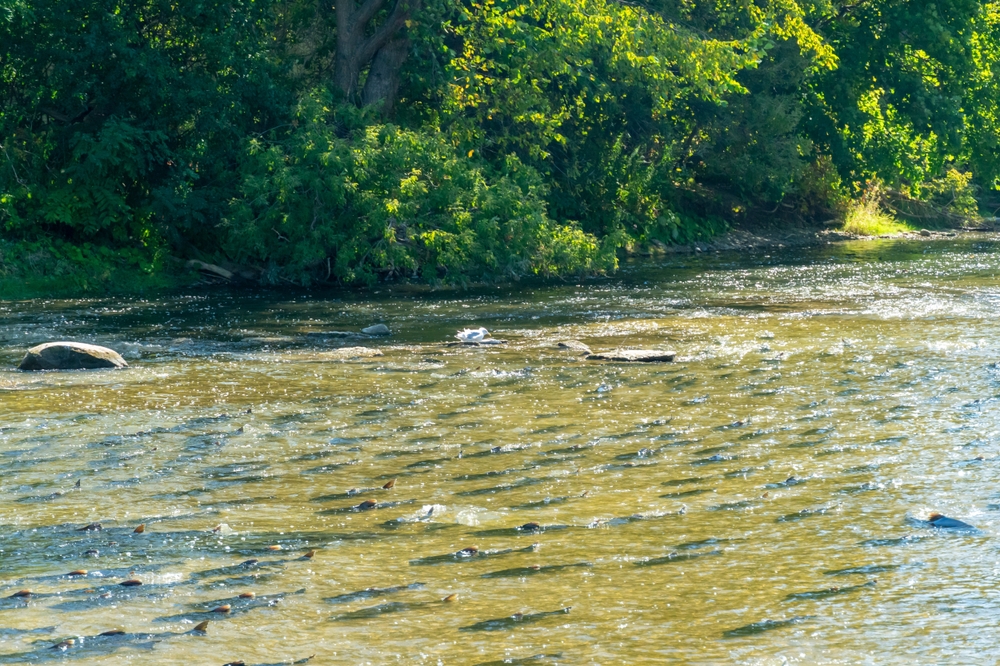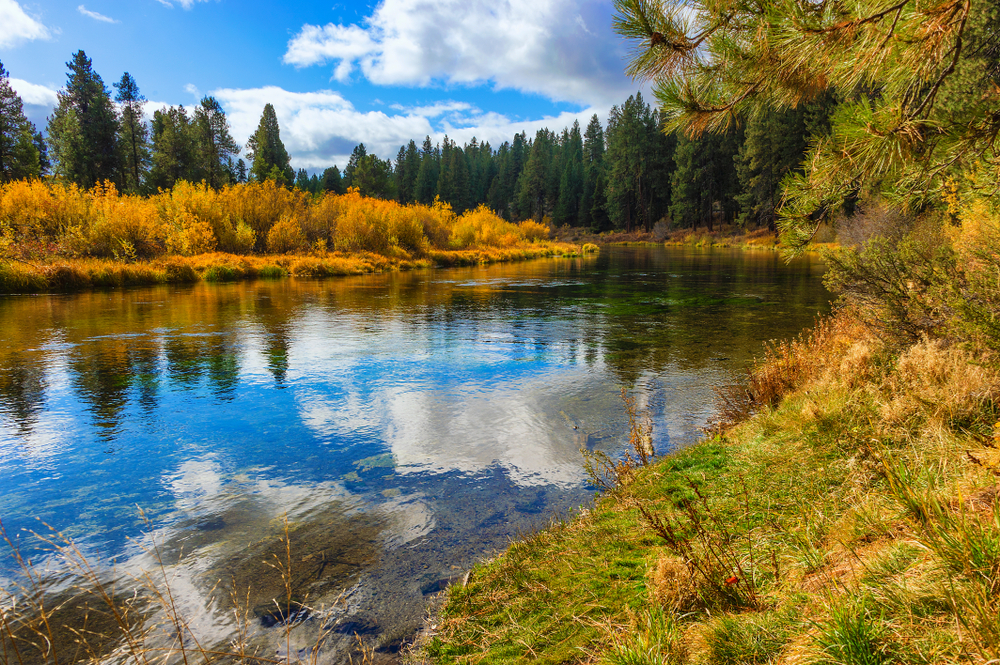Your cart is currently empty!
Water Is Freely Flowing Down the Klamath River for the First Time in 100 Years

In a historic environmental victory, the Klamath River has started flowing freely for the first time in over a century, following the largest dam removal project in U.S. history. This milestone is not just a win for the ecosystem but also a hopeful sign for the Indigenous communities that have long lived in harmony with the river.
Spanning Oregon and northwestern California, the Klamath River has been a lifeline for the region’s Indigenous tribes, representing both cultural heritage and natural resilience. The river’s revival tells a story of determination and the collective effort to restore balance. As the water flows unimpeded once more, it brings with it the possibility of a renewed connection between people, the environment, and the salmon that once thrived in its waters.
The Klamath River’s Historical Significance
The Klamath River has always been much more than just water. For centuries, it’s been the heartbeat of the region, sustaining both the environment and the people who call its banks home. Long before dams interrupted its flow, the Klamath was one of the West Coast’s most productive salmon rivers. Imagine the sight of countless salmon making their way upstream, feeding families, and anchoring the traditions of Indigenous tribes like the Yurok and Karuk.
For these tribes, salmon weren’t just about food. The annual runs were moments of joy and connection—a time to celebrate, honor ancestors, and strengthen ties with the land. It’s hard to overstate how deeply the river shaped their identity. The health of the Klamath wasn’t just about the fish; it reflected the well-being of their entire community.
But then came the dams. Suddenly, the salmon couldn’t reach their spawning grounds. Their numbers plummeted, and with them, the rituals and traditions that had thrived for generations. It wasn’t just an environmental loss—it was cultural heartbreak. The river, once a symbol of abundance and renewal, became a shadow of what it used to be.
The Klamath’s story reminds us of something simple but powerful: when we harm nature, we harm ourselves. Protecting rivers like this isn’t just about saving fish; it’s about safeguarding a way of life, one that ties people to the land and to each other. That’s a connection worth fighting for, wouldn’t you agree?
How Dams Disrupted a Natural Balance

When the hydroelectric dams were built on the Klamath River, things took a turn for the worse. These dams blocked the river’s flow, and as a result, salmon couldn’t swim upstream to their spawning grounds. Over time, fewer salmon returned, and their numbers started dropping fast.
For tribes like the Yurok and Karuk, this hit hard. Salmon weren’t just part of their diet—they were part of their identity. The salmon runs were tied to celebrations, rituals, and a way of life that went back for generations. Losing the salmon meant losing traditions that had been kept alive for centuries.
The dams didn’t just affect the people. The river itself changed, too. Water trapped behind the dams became stagnant, leading to toxic algae growth. This not only harmed wildlife but also created health risks for people. The whole balance of the river’s ecosystem was thrown off, impacting water quality and everything that relied on the river to survive.
A Community’s Fight for Revival
For the Indigenous tribes along the Klamath River, the fight to remove the dams was deeply personal. The river wasn’t just water to them—it was a part of their culture, their stories, and their identity. So, when the dams cut off the salmon and disrupted the delicate balance of life, it felt like a part of their heritage was slipping away.
But giving up wasn’t an option. The Yurok and Karuk tribes took a stand, determined to see the river restored. They teamed up with environmental groups and launched a decades-long fight. It wasn’t smooth sailing; energy companies and other powerful players pushed back hard, insisting the dams should stay. Yet, the tribes persisted. They raised awareness, educated the public, took the fight to court, and gathered allies along the way.
After years of tireless work, their efforts bore fruit. The Federal Energy Regulatory Commission (FERC) approved the removal of the dams—a monumental win not just for the river, but for the people who had fought so long to bring it back to life. This victory was about more than policy or infrastructure. It was a reminder of the power of listening to and respecting Indigenous voices and how much can be achieved when communities unite for a common cause.
In the end, this wasn’t just about restoring a waterway. It was about reviving a way of life and healing the bond between people and the natural world. The Klamath’s return to its natural flow is proof of what persistence and unity can accomplish, even in the face of incredible odds.
The Turning Point: Restoring Flow and Welcoming the Salmon’s Return

The journey to revive the Klamath River reached a transformative moment when the Federal Energy Regulatory Commission (FERC) approved the plan to dismantle its dams. This decision marked the culmination of decades of tireless advocacy, setting in motion the physical and ecological restoration of the river. It wasn’t just about removing barriers; it was about breathing life back into a river and its surrounding ecosystems.
The dam removal process required meticulous planning. Experts analyzed the sediment trapped behind the dams to ensure that its release wouldn’t disrupt downstream ecosystems. Crews reinforced vulnerable riverbanks to prevent erosion and prepared upstream habitats for the eventual return of salmon. Every step reflected a commitment to balancing ecological recovery with cultural and environmental needs, guided in large part by the wisdom and collaboration of local tribes.
A Historic Milestone: The First Salmon’s Return
On October 16, 2024, the fruits of these efforts became undeniably clear when Chinook salmon were spotted making their way back to the Klamath Basin—a sight that hadn’t been seen since 1912. This wasn’t just a biological event; it was a moment of profound cultural and spiritual significance, especially for the Klamath Tribes, whose heritage is deeply intertwined with the river and its salmon.
The return of the Chinook salmon stands as a powerful reminder of nature’s resilience when given the opportunity to heal. It’s a testament to what can happen when barriers—both physical and systemic—are removed. The sight of these fish navigating their ancestral waters again wasn’t just symbolic; it was proof that ecosystems can recover and thrive with human support and dedication.
As the Klamath River flows freely for the first time in over a century, it carries with it a renewed sense of hope. The return of the salmon underscores the importance of ongoing stewardship—not just for this river but for natural ecosystems everywhere. This historic milestone is a celebration of what’s been achieved and a reminder of the work still needed to ensure that nature, once restored, continues to thrive.

Ensuring a Sustainable Future for the Klamath River
Taking down the dams was just the start. Now the real work begins—keeping the Klamath River alive and thriving for generations to come. It’s not just about salmon swimming upstream; it’s about the entire river ecosystem finding its rhythm again. Imagine what this means—not only for the fish but for everyone who relies on this river, from wildlife to local communities.
At the heart of this effort are the tribes, who’ve known this river like an old friend for centuries. Their traditions, paired with modern science, are like a guiding light for the restoration process. And it’s not just them. Locals are rolling up their sleeves too—planting native plants, tidying up riverbanks, and doing what they can to make sure this river has a fighting chance. These might sound like small actions, but they add up in a big way.
And let’s not forget the water itself. During dry spells, every drop counts. Farmers and residents are learning how to use water more thoughtfully, ensuring the river keeps flowing. It’s going to take teamwork—tribes, neighbors, scientists, everyone—but isn’t that what makes these kinds of victories even sweeter? Together, they’re shaping a brighter future for the Klamath River, one step at a time.
A New Beginning for the Klamath River
The Klamath River is flowing free again, and it feels like a breath of fresh air—for the land, the wildlife, and the communities that have depended on it for centuries. This isn’t just about a river finding its way. For the Yurok, Karuk, and other local tribes, it’s the return of a sacred connection. The thought of salmon swimming back upstream after more than a century? That’s not just hopeful—it’s transformative.
What made this happen? Plain and simple: people coming together. The tribes, environmental groups, and local communities didn’t just talk about change—they fought for it. They pushed through setbacks and opposition to make sure the river had a chance to heal. It’s a powerful reminder that when people work side by side, even the toughest challenges can be overcome.
The Klamath’s revival isn’t just a win for one river—it’s a lesson for all of us. It shows what’s possible when we respect nature and the deep connections people have to it. The river’s new beginning is proof that change isn’t just possible; it’s within reach when we’re willing to work for it. And really, isn’t that something worth celebrating?
